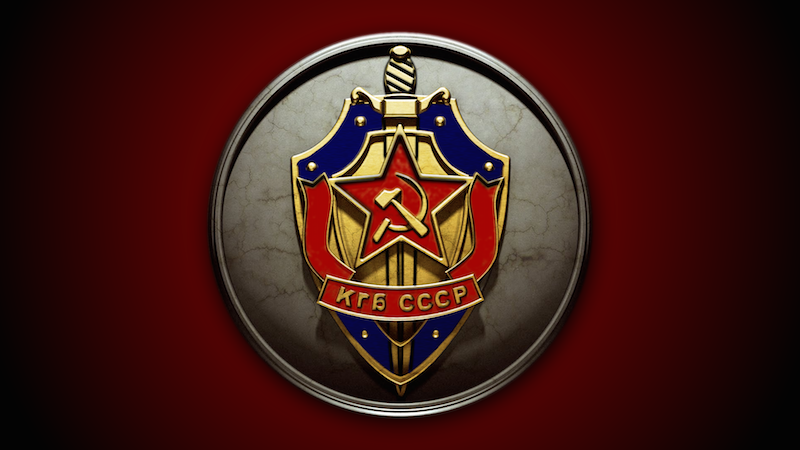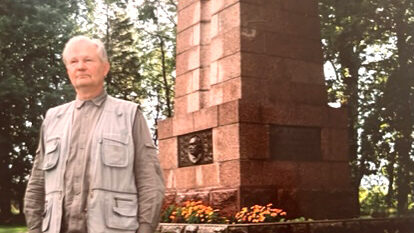In an interview given in June 2010 in Ukraine Vladimir Putin said: “I's difficult being a professional spy. Only the most heroic and trustworthy can be a spy because he has to blend into the enemy's society, speak their language perfectly and at the same time serve one's fatherland. Their homeland guarantees all returning heroes a comfortable and interesting life. Traitors will be condemned because they have lost control of themselves through alcohol.”
A massive far-reaching network of informers who were always on the job was the basis for the power enjoyed secret servies. Even though these services (aka ‘competent organs')survived many name changes (Ohkrana, CHEKA, OGPU, NKVD, NKGB, NKVD, MGB, MVD, KGB, FSB), administrative integrations and separations, the most important work taking a priority place in the structure was the process of recruiting and the achievement of set goals. The recruitment of agents was not exclusive only to the secret services and military intelligence (GRU) but also the basic work for the military's special departments, in fact for all ‘power structures'. In addition to intelligence and counterintelligence services, recruited agents were used by corrections departments, the police, criminal investigation units, state prosecuters etc., all of whom were in subordinate positions to the state security agencies.
The relative concentration of recruited agents depended on the sector of society in which they were active. The concentration was obviously more intensive in strategic sectors, in places where there was a higher rate of contact with foreigners, with state secrets, the military, with criminal activity, places of higher education. During the Stalin era it was easier to recruit agents, thus there were more of them. During the years following WWII the recruited membership of the security apparatus consisted of informers, agents, residents. Up to 1980 the structure had changed very little and the KGB network consisted of recruited agents, residents and keepers of safe houses/apartments. Informants were obliged to regularly pass on to their handlers, information they had heard or seen. Since this classification of collaborators, recruited agents were not considered to be totally trustworthy, being often recruited through coercion and having no special training, they weren't used in complicated operations or tasks. As early as 1950, these informers who were the largest segment of recruited collaborators, were gradually abandoned as secret agents. Their role was given to ‘trustees', whose loyalty to the regime had been tested.
Agents gathered necessary information in support of active operations, kept surveillance on targeted individuals and generally fulfilled conspiratorial assignments. Their targets often were labelled as ‘risks' to the security of the state. Agents were also classified as specializing in specific activities: personnel in prisons or jails, penetrators of targeted organizations such as, clubs, interest groups, churches, in order to cause internal conflict. Agents were also used for ‘wet affair's, in assasinations. Contact with these individuals took place in safe houses. Safe addresses and safe telephones were also held by collaborators.
‘Residents' were assigned to be the link between KGB career officers and the collaborators who had been recruited. Residents instructed the recruited agents and trustees, tasked them with specific assignments. Residents had to be vetted individuals within the party or comsomol organization, but no one from their leadership positions. Residents could also be former KGB professionals or agents promoted because of efficient work as agents. Permanent dossiers were kept on residents as well as on agents. They also underwent a work revue every two years which was the basis for promotion etc.
KGB trustees were mainly managing personnel in a variety of establishments who informed the KGB about individuals subordinate to them. Their contact with the KGB was not conducted conspiratorially but the nature of the relationship remained a secret. Assignments did not require special training or familiarity with tradecraft. Contact was made as needs arose and information was passed on verbally. Successfully completed assignments resulted in compensation. Trustees were recruited on a volunteer basis, assignments did not require a signed receipt, trustees did not have an agent name and a personal dossier on them was not kept. Only minimal information about trustees were kept such as who they were, the time of their recruitment etc. Formally they did not belong with the category of secret collaborators. In the directives of 1959 and 1960 trustees were given a slightly wider selection of activity which recognized them as Soviet patriots who forwarded to the KGB information about individuals and circumstances that was state security related. They also occasionally fulfilled limited operations.
Laas Leivat (To be contd.)




